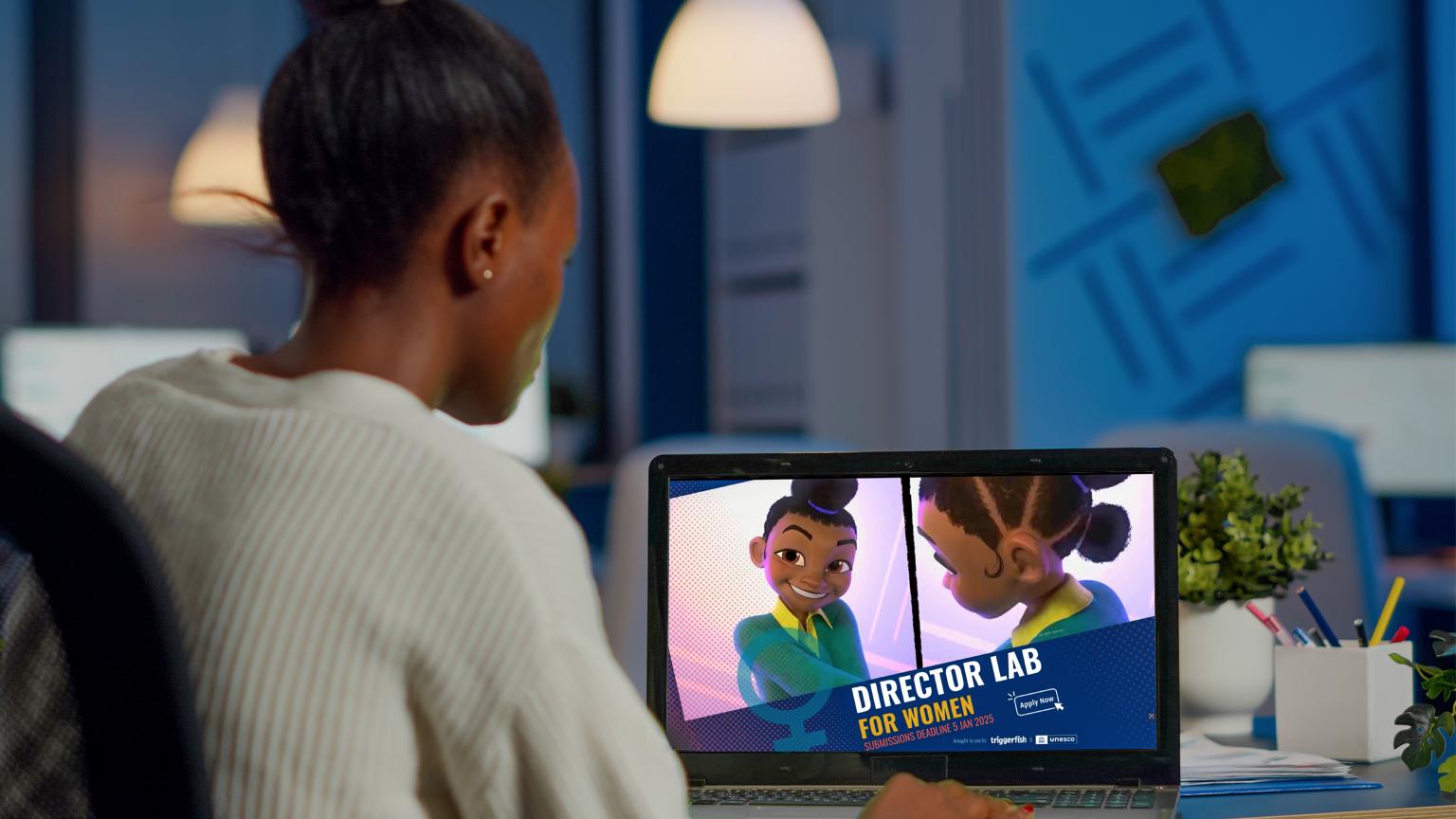
Total population in Kenya by gender
From 2013 to 2023
Triggerfish Creator Labs is helping them direct, design and drive Africa’s animation boom
In Summary

Audio By Vocalize

This is a whimsical tale about a curious Nigerian girl who gets transported through time and encounters a band of unusual characters, who change the course of her destiny.
At the time, investors harboured doubts about Africa’s ability to produce a world-class animated film.
But Amidu, undeterred, led a determined team that midwifed Nigeria’s first feature-length animation film in 2020.
“Nobody had done it and no one was willing to try, thinking they would fail,” Amidu, who's the CEO of Hot Ticket Productions, told bird.
Women are especially underrepresented in African animation, she said.
But that is about to change. Cape Town-based Triggerfish, the continent’s biggest animation studio, is now aggressively expanding its initiatives to recruit and train African women in animation.
The studio aims to disrupt a historically male-dominated industry as demand for locally produced content surges.
Triggerfish's bid to foster diversity in African animation value chain comes as other studios ramp up investments into storytelling.
Its push to diversify the African animation value chain also aligns with broader efforts across the continent to bolster production and court overseas viewers.
CHANGEMAKERS
The African Animation Network, for example, has been instrumental in developing pan-African collaborations and producing shows like ‘Take That, Bullies! — Garbage Boy & Trash Can’.
Similarly, Kukua Studios in Kenya has gained recognition for its superhero series ‘Super Sema,’ starring Academy award winner Lupita Nyong’o as a voice artist.
Elsewhere, Nigeria-based Orange VFX Studios has been pushing boundaries in 3D animation, producing content such as ‘Wale and Ovie’.
Meanwhile, Egypt’s Samaka Studio focuses on educating young audiences about Egyptian culture through engaging animated stories.
These animation hubs, alongside Triggerfish, contribute to a vibrant ecosystem, where African stories take centre stage.
Individual trailblazers are also shaping the scene, with Zambia’s Malenga Mulendema having scored Netflix’s first African animation deal with Mama K’s Super 4.
For decades, Africa’s animation sector has been skewed toward male directors, writers and art leads, with women often sidelined to supporting roles like production coordination.
Last year, however, the Triggerfish Academy, backed by Unesco, launched Creator Lab in a bid to shake up the continent's talent pipeline.
“Our main aim is to introduce economic scale within underprivileged communities, focusing on women in animation,” Triggerfish Academy head Aibe Elukpo said.
Recent projects include the all-female Gender Mix initiative, which trained 27 directors and 20 artists across Africa, and Unesco-funded labs targeting technical roles like 3D modelling and concept art.
Elukpo has witnessed the gender gap firsthand.
“The animation space, especially in fields like art direction, concept design and directing, has long been dominated by men,” he said.
“Women often end up in producer roles, but rarely in the creative driving seat.”
Triggerfish, whose masterclass has since attracted multiple applications, aims to change that.
GIVING A CHANCE
Over the past few years, Triggerfish has rolled out a series of labs, including one with Disney, specifically designed to boost female participation in African animation.
These programmes aim to create real pipelines for women into high-level creative roles.
Elukpo shared how their latest initiatives received an overwhelming response.
“For the Creator Labs, we had close to 400 applications from across the continent,” he said.
“We had initially planned to select 20 women for each lab, but due to the strength of the applications, we expanded.
“The Director’s Lab ended up with 27 participants, drawn from countries like Nigeria, Ethiopia, Tanzania, Kenya, South Africa, Egypt and more.”
While women dominate producer roles, only 15 per cent of Africa’s animation directors are female, per internal data.
Triggerfish’s Gender Mix project, which is 99 per cent women-led, forced a reckoning.
Each Triggerfish's lab is designed not just to teach skills but also to foster confidence and leadership.
The curriculum includes workshops on pitching, marketing oneself as an artist, responding to feedback and refining story ideas. “It’s about more than technique,” Elukpo said.
“We want women to know that animation can be a powerful career path and a platform to tell their own stories.”
While men often gravitate towards action-driven plots, “things with pythons and explosions,” he joked, women tend to bring a different perspective.
“There’s often more empathy, more intention in their storytelling. That diversity of voice is exactly what Africa's animation industry needs to grow and stay relevant.”
GROWTH PLATFORMS
Triggerfish and Unesco estimates show that Africa’s film and audiovisual sector generates about $5 billion (Sh646 billion) in GDP and supports more than five million jobs.
Yet, women, especially women of colour, continue to be underrepresented in leadership positions across the industry.
Triggerfish is upbeat that the rise of digital platforms will continue to open new avenues for African women animators to showcase their work and reach global audiences.
Tellingly, YouTube has become a hub where animators share content, build communities and monetise their work through ads, sponsorships and merchandise.
Creators like 'illymation' have successfully transformed personal storytelling into thriving channels, inspiring others to follow suit.
Patreon, meanwhile, offers a membership-based model that enables artists to earn recurring income by providing exclusive content to subscribers.
This direct support system allows animators to focus on their craft, while sustaining their creative projects.
Freelance marketplaces such as Upwork and Fiverr are also expected to further expand opportunities by connecting animators with clients worldwide, facilitating commissioned work and collaborations that enhance industry presence.
Social media platforms like Instagram, TikTok and Behance now serve as dynamic visual portfolios, helping animators engage with audiences, attract potential clients and establish their brand within the competitive landscape.

From 2013 to 2023